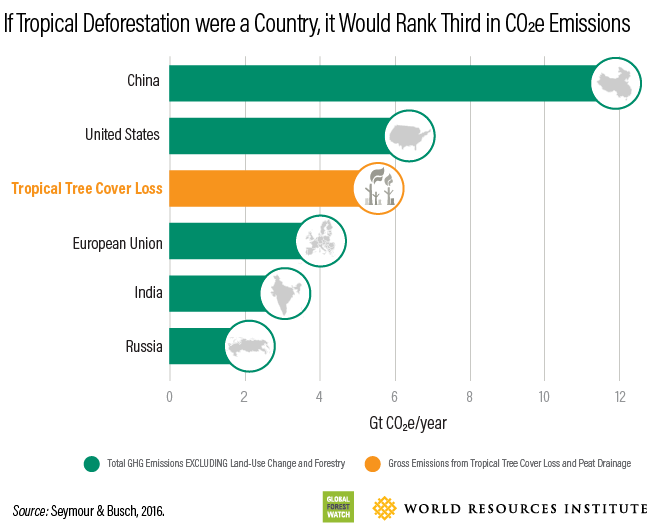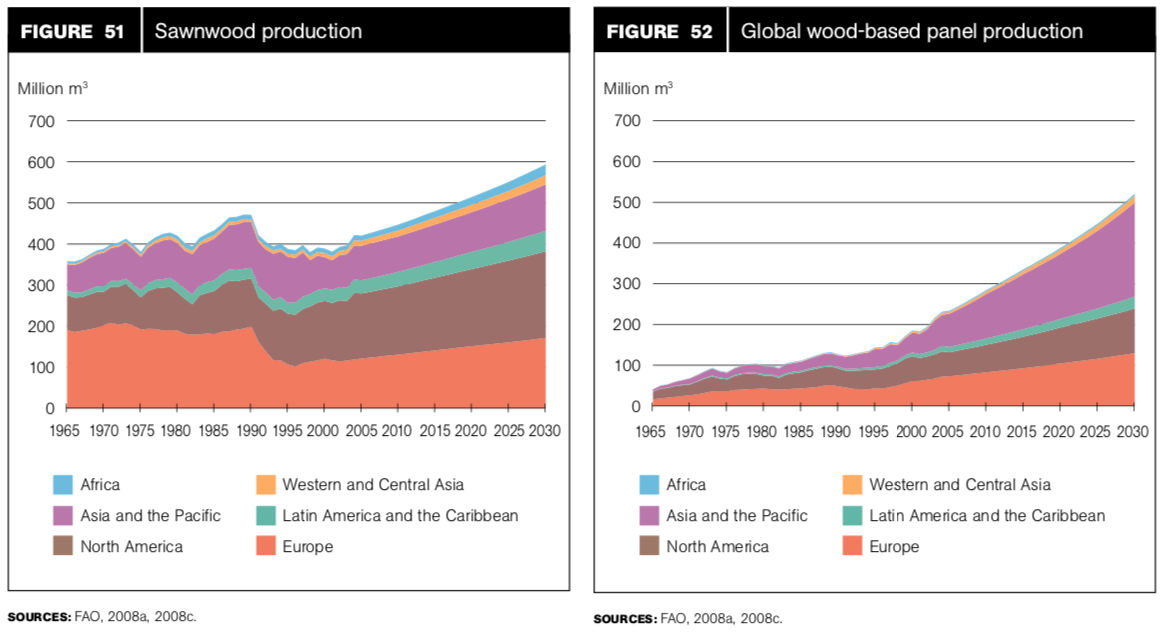Olivier Dietrich
“Trees, how many of ‘em do we need to look at ?”
Ronald Reagan
Deforestation is a primary contributor to some of the biggest contemporary issues, such as climate change and the loss of biodiversity. This article will show through concrete examples how digitalization can help in both preventing deforestation and improving the forestry industry to become more efficient and sustainable.
A few numbers
Forests represent 30 percent of our land[1]. However, this number is decreasing alarmingly fast. The world’s forests shrank by 1.3 million square kilometers between 1990 and 2015[2]. In other words, we are losing the equivalent of 800 football pitches of forests every hour since 1990. Since the beginning of the 20th century, more than 20 percent of the total forest on our planet has disappeared. Together, farming, grazing of livestock, mining and drilling count for more than 50 percent of all deforestation. Forestry practices and wildfires (whose numbers have increased due to climate change), combined with a negligible part for urbanization (less than one percent) account for the rest[3]. The consequences on biodiversity, ecosystems, local communities and climate are catastrophic. Forests host more than 80% of all land animals and plants[4] and more than 250 million people who live in forests or savannahs depend on them to live[5]. Regarding climate change, forests are essential in their role of carbon sink. Cutting trees simultaneously release carbon dioxide in the air while removing the ability to absorb existing CO2 in the ground. To put that into perspective, if tropical deforestation was a country, it would alone rank third in carbon-dioxide emissions[6].

Figure 94.1 – Countries with highest CO2 emissions, including tropical deforestation [6]
Forests play a vital role in our hopes to reduce emissions by 2030 in order to be aligned with the Paris Agreement. In fact, a quarter of all planned emissions reductions by 2030 relies on them[7]. The urgency of saving forests in order to curb the extinction crisis and fight climate change keep on being underlined by the most recent reports on climate change[8],[9]. For all these reasons, it is crucial to decrease deforestation rate and transform the forestry industry. In these two topics, digitalization has a big role to tackle this issue.
Digitalization to prevent deforestation
Going paperless, connecting forests with sensors, creating better tools to monitor a forest’s current state and producing more accurate data: the possibilities that offer digitalization in the fight against deforestation are uncountable. Numerous initiatives are flourishing all around the world, coming from all sorts of stakeholders such as governments, NGOs, industries, local communities or even individuals. Below are a few concrete examples where digitalization methods are being applied to prevent deforestation:
- How can we tell local communities or industries to stop deforesting when they depend on it to survive? The High-Carbon Stock Approach (HCSA) is a methodology that aims to address this issue. Ratified by both NGOs such as GreenPeace and big industrial actors like Unilever, the HCSA “distinguishes forest areas for protection from degraded lands with low carbon and biodiversity values that may be developed”[10]. Measures on the fields can be done to classify regions according to the HCSA, but it is a slow and unscalable process. Instead, satellite images combined with appropriate algorithms can be used to produce HCS maps of huge region in no time.[11]
- Illegal logging is still a huge problem in the world, as between 50 to 90 percent of the logging happening in the world’s rain forests is illegal[12]. San Francisco-based nonprofit Rainforest Connection[13] has created beacons from old cellphones that allow to alert communities on the ground, via text messages, when illegal deforestation is being committed. Beacons are attached high up on trees, to pick up best possible signals, and machine learning models are used to detect the noise of chainsaws or bulldozers amidst the hustle and bustle of the jungle.
- In Prey Lang, Cambodia, an app has been developed to help local villagers monitor the resources and activities of their lands, often subject to illegal logging[14]. Awarded with the 2015 Equator Prize, this app also allows to increase volume, accuracy and quality of data gathered on deforestation at a larger scale and to raise awareness on this issue.
These examples, very different by nature, aim to show how large the range of opportunities offered by digitalization is and how beneficial this latter can be to prevent deforestation.
Transforming a whole industry
The forestry industry employs 13.7 million workers worldwide and its output counts as 1 percent of the global GDP[15]. Wood in itself is seen as the material the world needs most without having to rely on fossil fuels. The forestry industry is currently facing numerous challenges, such as wildfires or staffing shortages[16], but the most urgent one is certainly its sustainable transition. In 1992 already, the UN Conference on Environment and Development in Rio produced the Forest Principles[17], a non-legally binding document that make several recommendations about sustainable development forestry. Since then, pressure from both public and governments have increased, and forestry players must now meet the (still[18]) growing demand for wood with increasing complex regulations.

Figure 94.2 – Wood production will keep on increasing in the following decade [18]
Recycling and incorporating circular economy for forestry will be essential to help the industry. And so will be digitalization. Indeed, digital solutions will allow the optimization of the industry supply chain, from planting to forest management and from harvesting to logistics[19]. Use of satellite images and remote sensing tools to accurately monitor forests at single-tree level, of blockchain technology to follow certifications procedures or of optimization system to ensure quality decision making, the possibilities that offers digitalization are, again, numerous. Finland serves at best example to illustrate this. True forerunner in the forestry industry, the most forested country in Europe is currently developing and deploying several digitalization techniques to improve its forest management. Thanks to collaborations between its IT and forestry industries, an extensive use of remote sensing tools to gather data and evidences from their forests has been set up, and many innovations such as drones able to detect damages caused by beetles are being tested on the field[20]. One company’s goal is to cost-efficiently create a virtual twin of a forest[21], allowing for a forest owner to get an optimal management and even a virtual reality visit of his lands! Digitalization can thus be very beneficial for the forestry industry. In fact, if all the data from forests could be utilized, the cost saving linked to this digital leap would be estimated to be EUR 100 million per year [22].
To conclude, this article has first refreshed some numbers to illustrate how catastrophic the deforestation issue is for our planet and our society. Then, it has shown how digitalization offers numerous promising solutions in both preventing deforestation and making the forestry industry more efficient, proving that digital revolution can be used for sustainable development.
[7] Grassi, G., House, J., Dentener, F. et al. The key role of forests in meeting climate targets requires science for credible mitigation.Nature Clim Change 7, 220–226 (2017)
[11] ETH’s EcoVision Lab is currently working on this project (Automated Large-scale High Carbon Stock estimation from Space)
[12] https://www.nationalgeographic.com/news/2017/06/topher-white-engineer-rainforests-explorer-festival/
[18] Global demand for wood product – FAO report http://www.fao.org/3/i0350e/i0350e02a.pdf
Media Attributions
- Tropical Deforestation as a country
- Global wood production projection